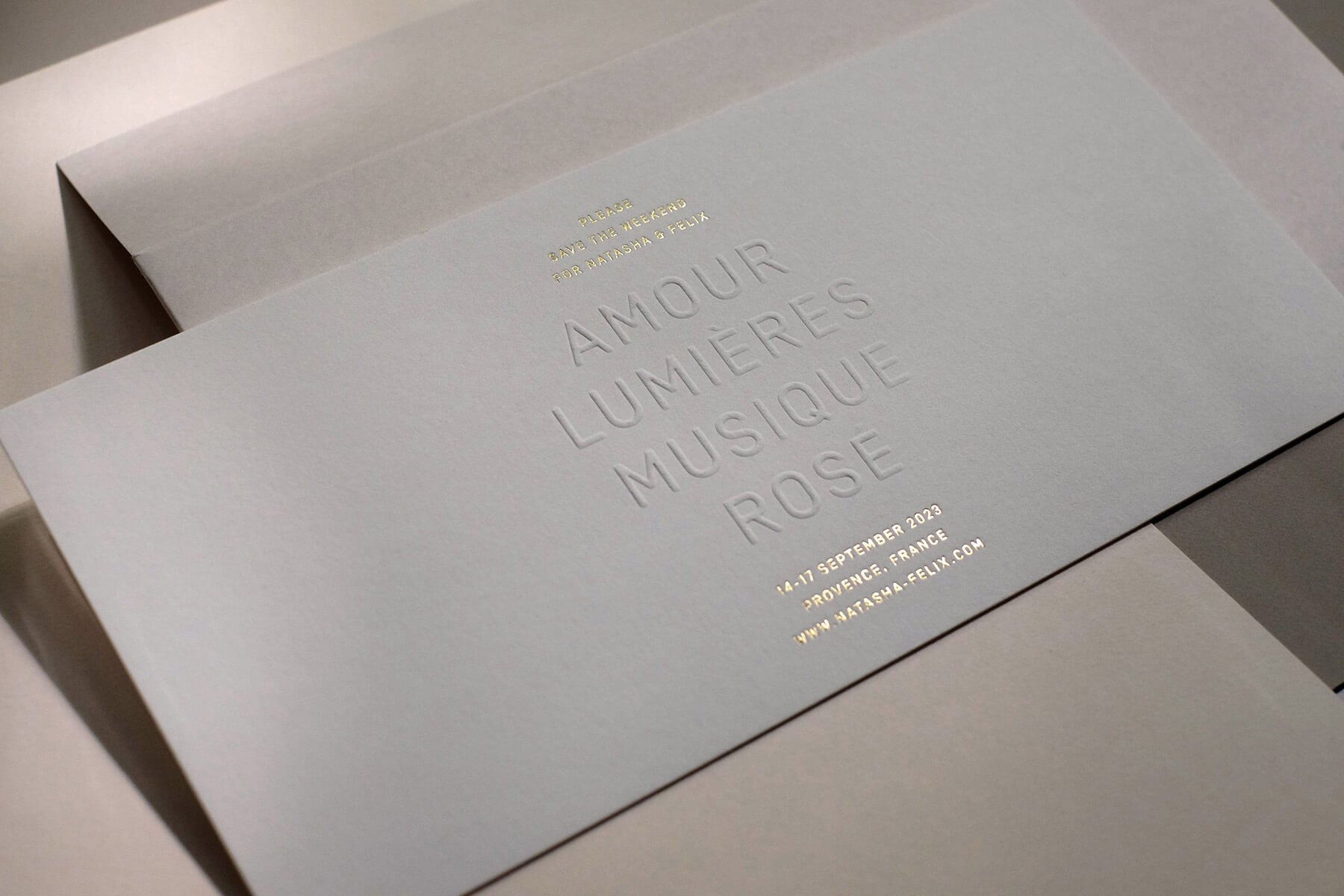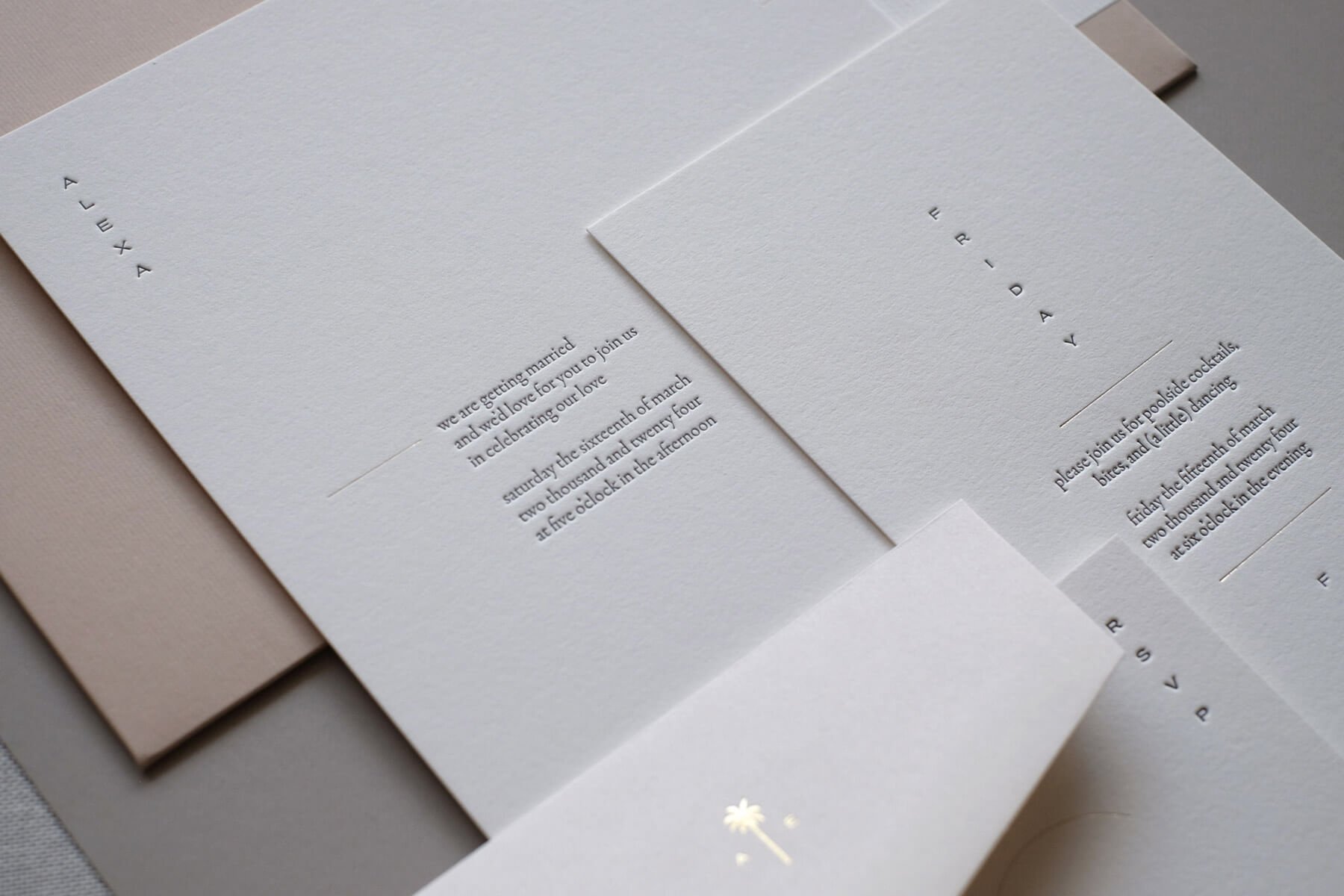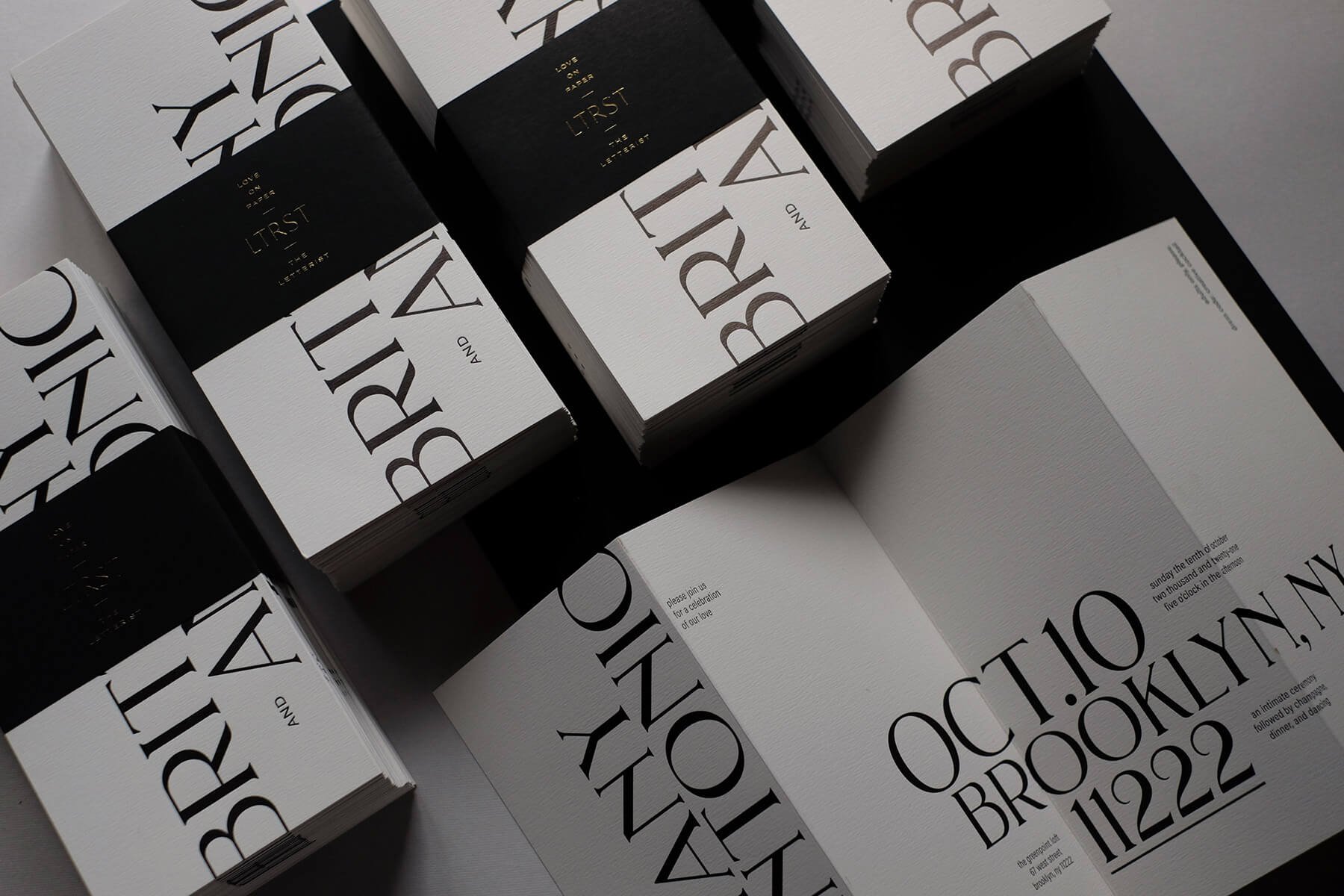Letterpress wedding invitations have been popular for decades, if not centuries, and only continue to rise in popularity despite the fact that the big old presses have long since ceased to be manufactured, and the craft is now kept alive solely thanks to a small number of passionate artisans. The artisanal movement that has gained increasing traction over the last couple of decades has seen antiquated letterpress printing techniques return to the forefront of trends in the fashion, luxury, and event industries, where an emphasis on...
Read MoreWedding Invitations
Destination Wedding Invitations

Destination weddings have become increasingly popular over the last decade, and creating destination wedding invitations usually requires an elaborate design process that often involves the close collaboration of the couple & their planning team, the stationery designer, the venue, and other vendors. Because the idea of traveling to Provence, Tuscany, or Cabo to celebrate your love with your friends and family is a fun idea - we have created this list of tips to help guide you through some of the nitty gritty details to consider, to hopefully keep the planning (and printing!) process fun too.
Read MoreSquare Wedding Invitations

If you’re wanting to do something different with your wedding stationery, opting for a square wedding invitation can be a strikingly simple way to stand out. When it comes to design, and more specifically to rethinking traditional design, sometimes the solution is as easy as switching up the format.
In a quick Google or Pinterest search, you’ll notice that most wedding invitations are usually about 5x7 or 6x9 inches and more often than not, in portrait orientation. Occasionally they’re flipped to landscape, perhaps to accommodate a long venue illustration, or simply to match the opening of the envelope so that everything follows the same orientation and does not need to be rotated upon opening. (A consideration perhaps, for only the very obsessive amongst us).
The next most popular shape, especially in recent years - is the arched invitation, and then of course there are the uniquely die-cut formats in organic or geometric forms. It’s rather surprising just how rare the square actually is! So of course we’re all about it, and it is the chosen format for the wedding invitation in our beloved stationery collection, The Editor.
Read MoreMinimal Wedding Invitations

Minimal wedding invitations have become a popular trend over the last decade or two, predominantly for couples seeking a more modern take on their wedding styling and stationery. They are largely characterized by concise and simple wording often typeset in small font sizes, large expanses of white (or negative) space, little to no decorative elements, patterns, or illustrations, and monochromatic, neutral, pale, or muted color palettes. Yum. What’s not to love.
Read MoreThe Dreamer, a luxurious, ethereal wedding invitation suite by The Letterist
Luxury Wedding Invitations
When you search for luxury wedding invitations or stationery - you’re likely to come across a plethora of examples which include at least one, if not all of these attributes:
Elaborate floral or decorative patterns covering large portions of the invitation, inserts, or envelope - and often involving specialty techniques and materials such as die-cutting or handmade paper
A multitude of inserts and additional finishing details such as pocket enclosures, envelope liners, inner and outer envelopes, wax seals, as well as decorative haberdashery elements such as ribbons, lace, or pearls
Traditional center-aligned layouts often typeset in old style serif typography or flowing script, as well as traditional invitation wording that includes parents’ names, spelled out dates or times, and formal phrases such as “The honor of your presence is requested” or “The favor of a reply is requested by…”
A lot of gold!
Folded Wedding Invitations

When it comes to choosing wedding stationery and particularly wedding invitations, the choice can be overwhelming. A design that speaks to you and matches your personalities and event styling is key, but it’s not only what’s written on the invitation that matters; the way the invitation itself is presented can tell a beautiful story. Folded wedding invitations, such as the ones in our beloved collection The Novelist, offer something striking, unique, and unexpected.
Why choose folded invitations?
There are a number of reasons to choose folded wedding invitations…
Read MoreEmbossed Wedding Invitations

First of all, what defines an embossed wedding invitation? People often confuse the words embossing and debossing or use embossed mistakenly to refer to any type of letterpress printing, when in fact these are very different techniques. Embossing requires two print plates or dies - often referred to as the male and female, and the paper is placed between them to create a raised, relief effect when pressure is applied. The embossed text or graphic elements are pushed upwards through the paper, creating a tactile relief and dramatic shadows; perfect for creating striking and memorable wedding stationery.
Embossing can be done with inks, foils, or without color altogether, in which case it is called blind embossing. And blind embossing is our love language. Because of the two print plates which slot into each other, blind embossing allows for a deep impression even without the application of any ink or foil colors.
Embossing is most notably used in Braille - the tactile written language form invented for the visually impaired - which allows readers familiar with the Braille alphabet to interpret words and letters through touch.
Read More

